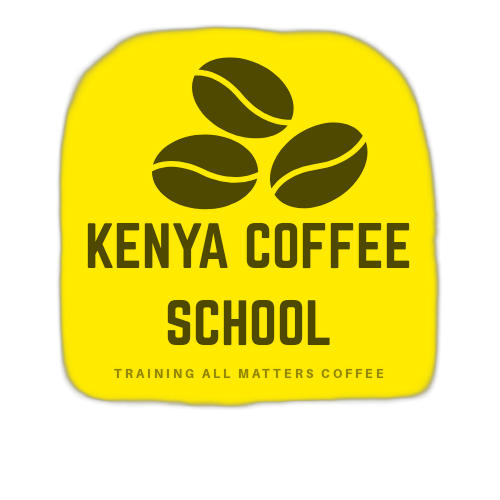Overview: CVA (Coffee Value Assessment) — SCA (Posted by Kenya Coffee School for reference purpose only by Barista Mtaani
What is CVA?
- The SCA’s Coffee Value Assessment (CVA) is a newer system to more holistically evaluate coffee across multiple dimensions (not just sensory).
- It aims to produce a “high-resolution picture” of a coffee’s value by independently assessing physical, descriptive (sensory), affective (liking/quality impression), and extrinsic/informational attributes.
- The traditional cupping score is still present but now plays a more contextual role within the system.
Core Components / Modules of CVA
Here’s a breakdown of what you’ll typically cover in a CVA course or training:
| Component | Purpose / Focus | Key Metrics & Tools | Comments |
|---|---|---|---|
| Physical Assessment | Assess the green (unroasted) coffee’s physical attributes | Bean color, moisture content, size distribution, defect counts (primary & secondary defects) | Done separately from sensory to avoid bias. |
| Descriptive Assessment | Objectively describe sensory attributes (flavor, aroma, acidity, body, aftertaste, novelty) | Use 15-point intensity scales, CATA (Check All That Apply) lists, reference standards, and neutral/ descriptive language | The idea is to separate description from evaluation (i.e. “this is floral / citric”) |
| Affective Assessment | Subjective, impression of quality or “liking” of the coffee | Hedonic (liking) scales (9-level or similar), total “Impression of Quality” out of 100, defect how many cups are defective (e.g. moldy, phenolic, potato) | Affective is personal, but structured to align with descriptive attributes. |
| Extrinsic / Informational Assessment | Qualitative/quantitative external info about the coffee | Certifications, origin, process, traceability, packaging, branding, etc. | This module may still evolve; SCA is iterating on the extrinsic section. |
Also, the CVA course often involves:
- Sensory References / Calibration
Participants train on reference aromas, tastes, and use standard anchor points (for example, aroma kits, flavor wheels) to calibrate among cuppers. - Blind Cupping Protocol
To avoid bias, cuppings are blind (no information about the sample until after assessment). - Separation of Processes
Physical, descriptive, affective, and extrinsic modules are kept distinct before combining results, to reduce cross-influence / bias. - Score Aggregation & Tools
The SCA provides tools (e.g. affective scoring calculators) to compute final scores.
Key PDF Forms / Templates (Downloadable)
Below are links to official or semi-official PDF forms that accompany the CVA / SCA protocols. These are useful to have in your training, for practice, or as reference:
| Name / Type | Description / What It Covers | Link / Notes |
|---|---|---|
| SCA CVA Descriptive Form (English, Secured) | Form for the descriptive (sensory) evaluation | Available PDF: SCA Coffee Value Assessment – Descriptive Form |
| SCA CVA Physical Assessment Form (Alpha V1) | For evaluating the green coffee (color, defects, moisture, size) | PDF: Alpha V1 Physical Assessment |
| SCA CVA Forms – English 06.24 (Secured) | Combined set of CVA forms in English (as of June 2024) | PDF set: SCA CVA Forms – English |
| SCA Cupping Form (Traditional / 2004 Protocol) | Older cupping form (still relevant, especially in calibration) | PDF: SCA Cupping Form |
| SCA CVA Forms – Spanish | Spanish version of the CVA forms (for Spanish-speaking users) | PDF: SCA CVA Forms – Spanish 06.24 |
If you go to the SCA’s “Coffee Value Assessment” page, you can also find “Key Documents” including glossaries, form downloads, digital tools, etc.
Suggested Outline for Course / Study Notes
Here’s a suggested layout you can use when structuring your own study or course notes:
- Introduction & Background
- Why SCA introduced CVA (limitations of previous system, need for more holistic valuation)
- Definitions: what “value” means in coffee
- Overview of modules/components
- Physical Assessment Module
- Sample requirements (e.g. 350 g for green)
- Color classes / classification
- Defect categories & weighting (primary, secondary defects)
- Moisture, bean size distribution
- Practical: counting defects, sample preparation
- Descriptive Sensory Module
- Sensory vocabulary & categories (floral, fruity, roasted, spices, etc.)
- Using intensity scales (e.g. 15-point)
- CATA lists and how to fill them
- Reference standards & calibration
- Blind cupping setup & protocols
- Affective / Quality Impression Module
- Hedonic / liking scales (e.g. 9-point)
- Scoring “Impression of Quality” (100 point scale)
- Identifying and deducting for defective cups
- How to combine with descriptive data
- Extrinsic / Informational Module
- Types of extrinsic attributes (certification, origin, process, traceability)
- How to document and weight these attributes
- Integration of extrinsic info with sensory / physical
- Score Aggregation & Tools
- How to compile module scores
- Use of calculators and digital tools (e.g. the SCA cupping/Affective score tool)
- Interpretation and reporting of results
- Practical Exercises / Calibration Sessions
- Sample cuppings, reference calibration
- Cross-panel discussions to align scoring
- Error analysis, repeatability & reproducibility
- Tips, Common Challenges & Best Practices
- Avoiding bias, maintaining strict separation of modules
- Handling defective cups
- Notes etiquette and record keeping
- Understanding limitations and interpreting results in context
- Appendices / Resources
- Glossary of sensory and coffee terms
- Full set of PDF forms
- Reference aroma / flavor wheels
- Links to SCA / CVA official resources
